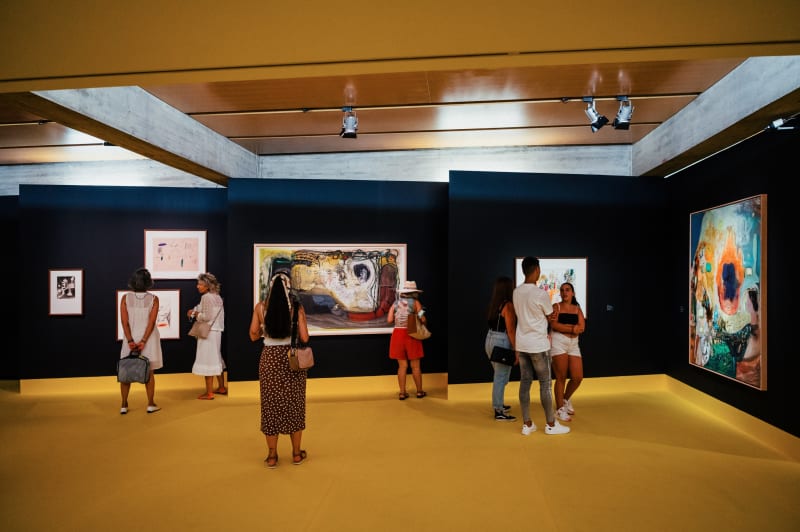Calouste Gulbenkian Museum, Lisbon, Portugal
This exhibition centres on the bringing together of two artists, one modern, Arshile Gorky (Khorkom, Armenia, c. 1904- Sherman, Connecticut, 1948), and the other contemporary, Jorge Queiroz (Lisbon, 1966). The initial idea was simply to observe the way in which Gorky's work 'speaks' to Queiroz. And Queiroz transformed the project into an installation in which he welcomes, or receives, Gorky's visit. As the artist mentioned in an accompanying text, he 'frequented Gorky to the point of incorporating him into the vision for the exhibition (…) and Gorky was there [in the exhibition, in the studio] almost always sitting in black and white, like his photograph'.
Due to its long-standing relationship with Armenia, the Gulbenkian Foundation has a long term loan of 57 works by Arshile Gorky, property of the Diocese of the Armenian Church of America (Eastern), in New York, and another three works in the Modern Art Centre collection. It was from this group that Queiroz selected the paintings and drawings to be presented in this exhibition, all belonging to the final period in Gorky's career, in the 1940s, unanimously regarded as his best phase, in which the artist reached full maturity and achieved a visual language that was entirely his own.
This group was also complemented by the loan of an exceptional painting from the Museo Thyssen-Bornemisza. Entitled Last Painting (The Black Monk) and dated 1948, it is widely believed to be Gorky's final painting, found on the easel in his studio when he took his own life.
We look for resonances, echoes and differences between the works of both artists, even though the entire exhibition is created by Queiroz, an invitation to Gorky's somehow guiding and ghostly presence.

